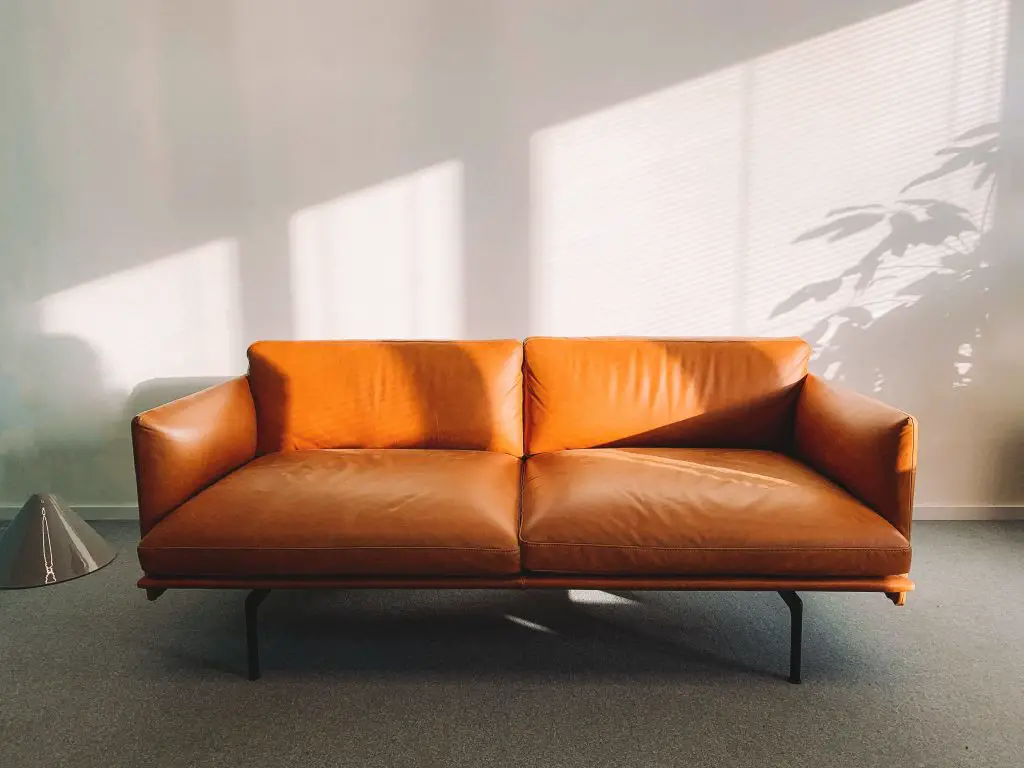If you’re wondering “should sofa be against wall?,” you’re not alone. Many homeowners grapple with this design question. This article aims to solve this common dilemma by offering step-by-step guidance on optimal sofa placement.

1. Consider the Size of the Room
When pondering whether or not your sofa should be against the wall, the first step is always to evaluate the dimensions of your room. This will help you determine how much space you have to work with.
Tools Needed:
Step-by-Step Instructions:
Pick up a tape measure: This tool will help you get accurate measurements of your room. Make sure it is long enough to measure the full length and width of the room.
Measure the length and width of your room: Stand at one end of the room and extend the tape measure to the other end to get the length. Do the same for the width. Make sure you’re measuring in a straight line to get the most accurate numbers.
Note these dimensions down: Whether you prefer old-school pen and paper or a digital note-taking app, jot down these measurements. They will be the foundation for all the decisions that follow.
Consider the shape of the room: Is your room rectangular, square, or another shape? The shape may also impact whether a sofa against the wall would work best for you.
Factor in other furniture: Will there be other pieces of furniture in the room? Make sure to leave space for them as well.
2. Focus on Functionality
Functionality is a key aspect to consider. Your living room is a multi-functional space that serves various purposes.
Step-by-Step Instructions:
Make a list of activities: Think about what activities will happen in this room. Are you planning to watch TV, host guests, or use it as a reading space? Make a list of these activities.
Position your sofa in a way that facilitates these activities: For example, if you’ll be watching TV, make sure the sofa offers a good view of the screen. If the room will host social gatherings, consider if a sofa against the wall will allow for comfortable seating and conversation.
Consider extra amenities: Think about side tables, lamps, or any other additional items that support your activities. The location of these items might affect your sofa placement.
3. Think About Visual Balance
Visual balance plays a crucial role in how comfortable and inviting your room feels.
Step-by-Step Instructions:
Identify the room’s focal point: This could be a fireplace, a TV, or even a large window.
Arrange your sofa and other furniture in a balanced manner: Does the sofa look better centered with the focal point, or would it create a more visually pleasing space if placed against the wall? Sometimes aligning your sofa with a focal point can give the room a harmonious feel.
Keep symmetry in mind: Visual balance often involves symmetry. Consider placing end tables, lamps, or other pieces of furniture symmetrically around the sofa to create a balanced look.
4. Keep Traffic Flow in Mind
Keeping an optimal flow of movement throughout the room is crucial, particularly in rooms that see a lot of activity.
Step-by-Step Instructions:
Walk around the room: Literally walk the pathways you’d generally use to navigate the room. Does putting the sofa against the wall obstruct your natural path?
Place the sofa in a way that doesn’t obstruct pathways: Remember, it’s not just about the space the sofa occupies, but also about the space needed to move around it comfortably.
5. Test and Adjust
Placement decisions don’t have to be set in stone. After making your best-educated guess, take some time to live with it.
Step-by-Step Instructions:
Place your sofa according to your best judgment: Using the insights gathered from the previous steps, place your sofa where you believe it fits best.
Live with it for a few days: Before making any final decisions, spend some time using the room as you normally would.
Adjust if necessary: If something doesn’t feel quite right, don’t hesitate to make adjustments. Maybe the sofa needs to be pulled a bit away from the wall, or perhaps it needs to be repositioned to create better flow.
For more articles on sofas, click here: Sofas: Easy Guide to Understanding Sofas and Related Furniture
Conclusion: Should Sofa Be Against Wall?
Determining whether your sofa should be against the wall involves more than just personal preference; it’s a multifaceted decision that impacts the functionality, aesthetics, and flow of your living space.
By carefully considering the size of the room, the room’s functionality, the visual balance, traffic flow, and your own experience after a test period, you can make an informed decision that suits both your needs and your style.
Remember, the ultimate goal is to create a comfortable, functional, and visually pleasing environment. Don’t hesitate to make adjustments along the way until you find the perfect spot for your sofa.
Whether your sofa ends up against the wall or floating in the room, the most important thing is that it works for you and enhances your living space. So go ahead and measure, plan, and rearrange as much as you need to find that perfect placement for your sofa.